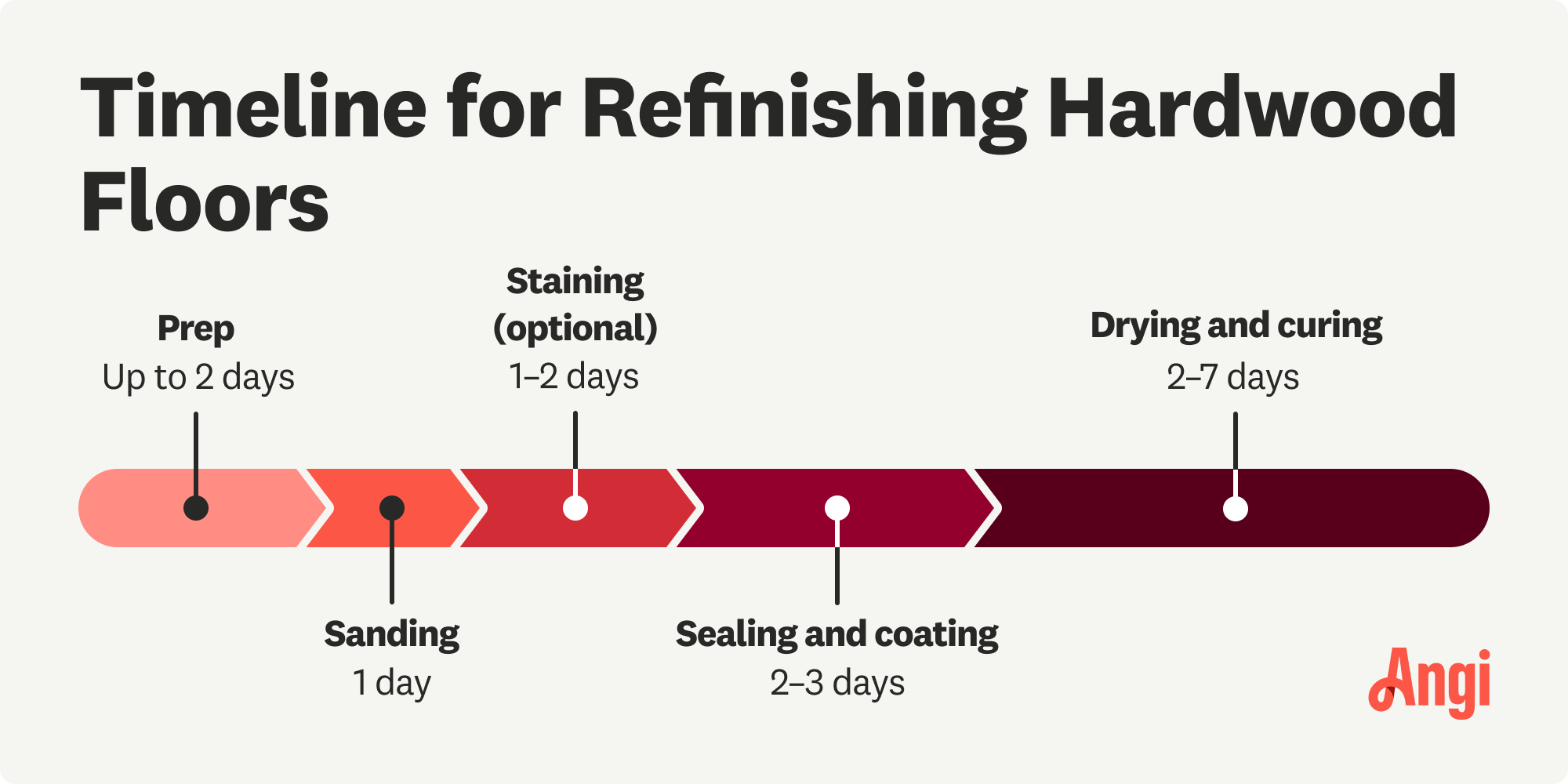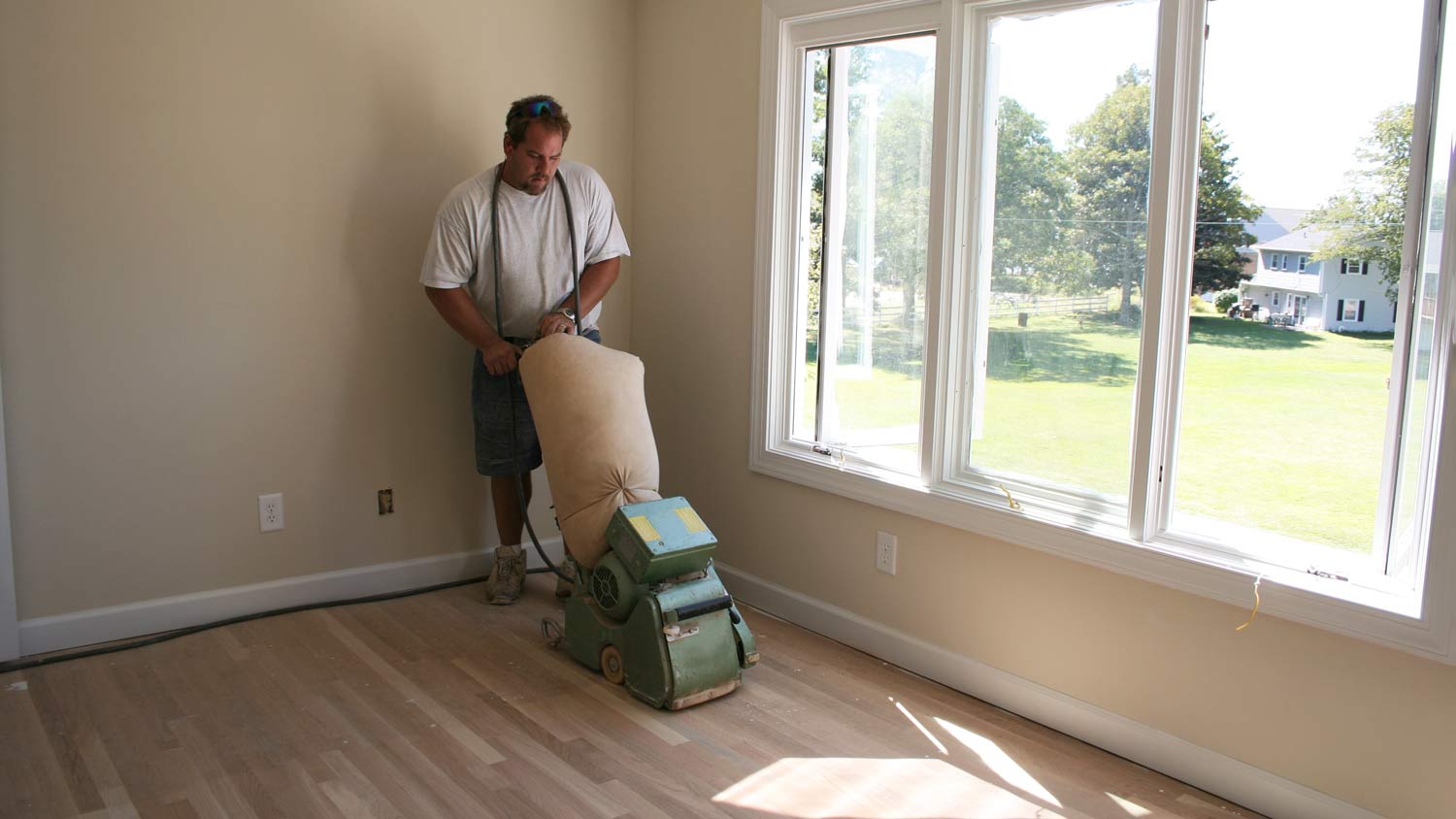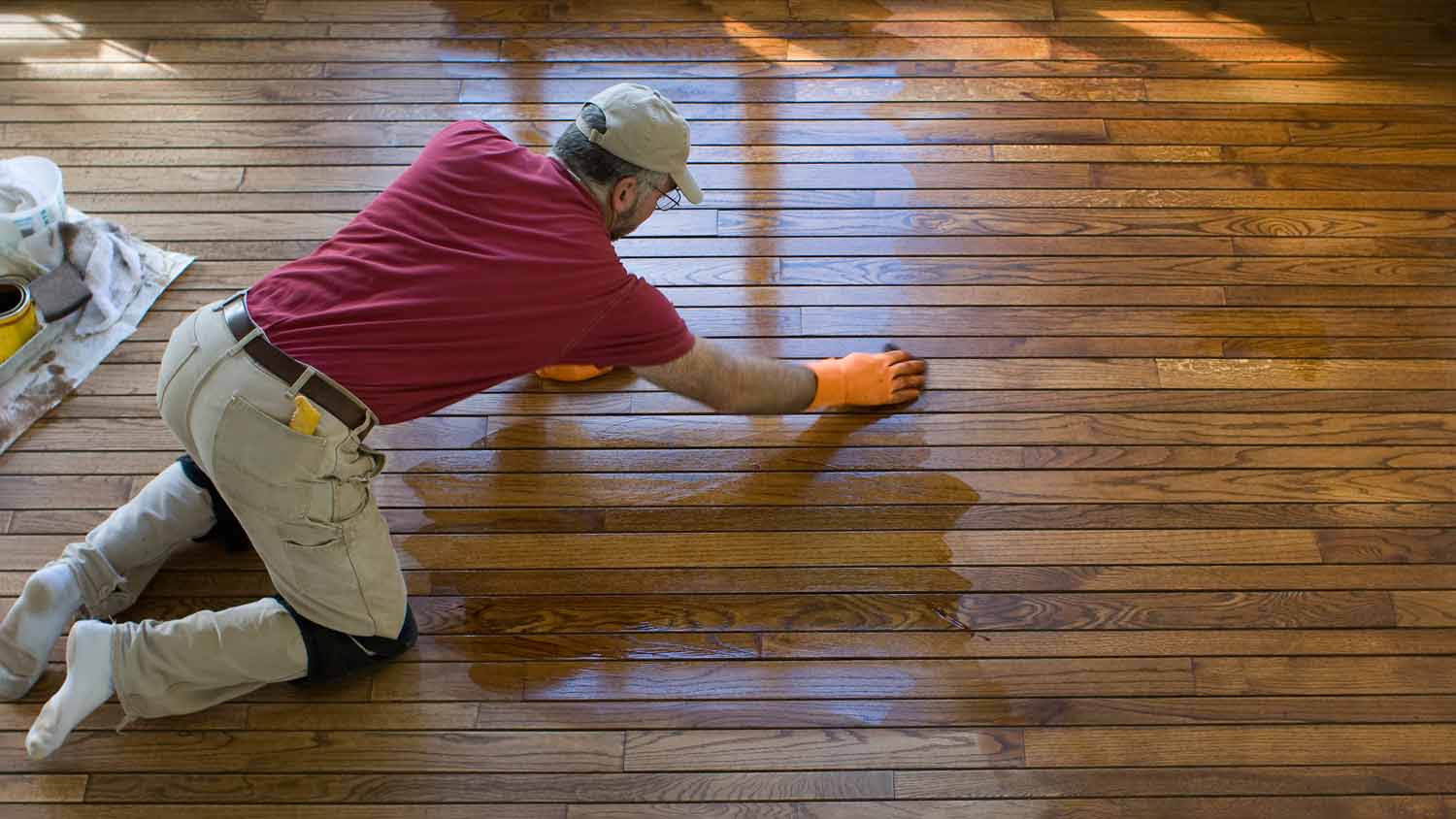
Both materials and labor determine hardwood floor installation costs. This guide breaks down all the prices you need to know before starting your new flooring project.
If your floors need a refresh, it’s time to refinish


It takes three to five days to refinish hardwood floors.
Applying a stain will add one to two days to the job.
It can take up to seven days for your floor to fully cure after the refinishing job.
Factors like the size and condition of the floor, type of finish, and type of wood impact the timeline.
If your hardwood flooring is starting to show its age, refinishing can refresh your space. Unfortunately, your floor will be out of commission while the project is underway—so how long does it take to refinish hardwood floors? The process takes three to five days, but some snags can impact the timeline. Let’s buff out the details to understand how long each step of the project takes.
Your floors are the foundation of a room, and as a result, they see a lot. This includes scratches from pesky pet claws, dents from accidentally dropping things, sun damage, and wear from walking back and forth. Though hardwood flooring is extremely durable and can last anywhere from 30 to 100 years, so much of that has to do with the fact that you can refinish it.
Knowing when to refinish your hardwood floors depends on what they look like and what condition they’re in. Here are some signs that it’s time:
There are lots of scratches or gouges that cut through the existing finish.
Your floors are discolored, whether it’s from an aging finish, sunlight, or stains.
Your floor sustained minor water damage, but the planks didn’t warp.
The finish looks dull.
If in good condition, original hardwood floors should always be considered for refinishing. While sanding can be messy, the result will be beautiful for decades if cared for properly. For historical homes, refinishing original floors also keeps the character of the house intact.
Refinishing hardwood floors takes three to five days in most cases, but certain projects can take longer. During the process, your hardwood floor refinisher will sand down the existing finish, stain the wood, and seal or coat the floor. After the coating dries, you can use your floors again, but it will take a few days to completely cure. Here’s what to expect for a timeline.

Your contractor will need to prepare the space before they begin. This involves moving furniture out of the way and covering cabinetry. For most projects, this happens on the first day before sanding. If you’re refinishing the floors in a large home, prep can take up to two days.

Sanding down your flooring takes about one day. Projects larger than 1,500 square feet can take a little bit longer. During this process, your contractor will completely sand down the old finish, which takes four to five passes with different sanders. Sanding will be the most labor-intensive part of the job.
Staining is optional, but it allows you to customize the color of your floor. This step will add one to two days to the project. Your contractor will need to spend extra time sanding, and you’ll need to wait for the stain to dry. Oil-based stains, which are the most common, take up to 18 hours to dry.
The next step is sealing your floor with a protective coating. This process takes two to three days. Most of that time is spent waiting for the sealant to dry between coats, since most floors require three coats. Oil-based coatings take eight to 12 hours to dry, while water-based coatings take two to six hours to dry.
Before you can use your floor as you normally would, you’ll need to wait for the sealant to dry and cure. It’s recommended to stay off your floors for at least 24 hours after the sealant is applied. You’ll still need to be careful until the coating fully cures, which takes two to seven days depending on the type of coating.

There are a few different factors that influence the timeline of your project, but a local wood floor refinishing pro can give you the most accurate estimate. Keep these factors in mind:
Size of floor: Larger floors take longer to refinish, though most contractors can sand 1,000 to 1,500 square feet per day.
Type of wood: Certain woods, like pine or maple, are more complicated to sand than others, like red or white oak. Thus, the wood species you choose can increase the timeline.
Condition of floor: Your floor will take longer to sand if it’s severely damaged or painted, or if there are thick layers of sealant on top.
Type of finish: Oil-based polyurethane finishes dry more slowly, and your contractor can only apply one coat per day. Compare this to water-based finishes that dry more quickly, and your contractor can apply up to four coats per day.
Climate: If you live in an area with high humidity or cold temperatures, your finishes will take longer to dry.
From average costs to expert advice, get all the answers you need to get your job done.

Both materials and labor determine hardwood floor installation costs. This guide breaks down all the prices you need to know before starting your new flooring project.

Hardwood floor repair costs depend on the problem. This guide breaks down common costs based on factors like the type of problem, repair method, and whether you hire a pro or DIY.

Here’s what you should expect to pay when renting an orbital, drum, vibrating, or edging floor sander—as well as where you can rent them and what else to know.

Hardwood floors improve the look and feel of your home. Refinishing them requires some work, but with these tips, your results will be better.

If your wood floor has seen better days, you can try buffing it instead of replacing it. Learn how to buff a hardwood floor to give it a new lease on life.
Moisture and heat can cause buckled hardwood floors. Learn why this happens, how to prevent it, and what to do if your hardwood floor is buckling.